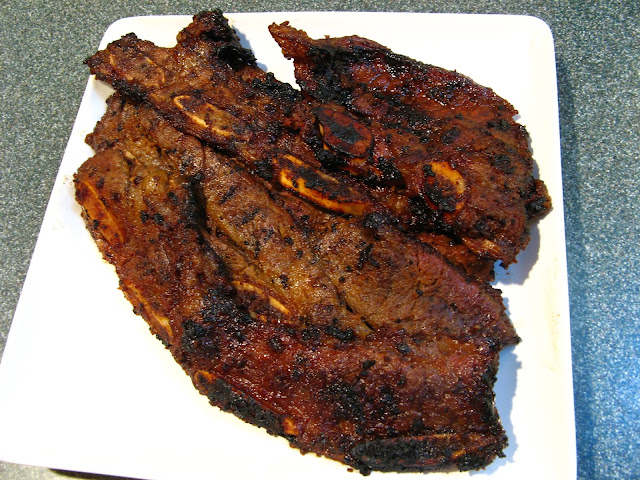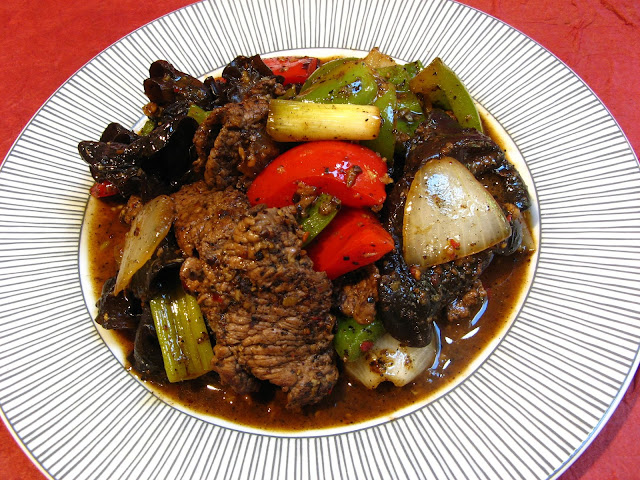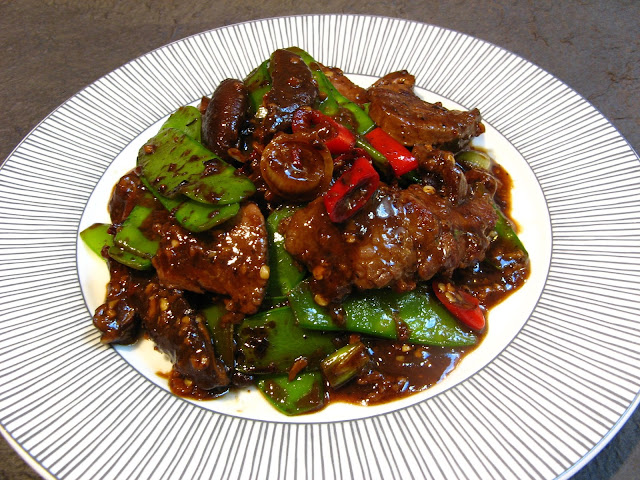This recipe was updated on 30 Aug 2016. The Cantonese
translation for Shabu Shabu was added to the title.
Here’s another recipe using thinly sliced beef, this time
using whole dried Japanese chilies, marinated bean curd, brown mushrooms, and long
beans. The previous recipe: Black
Bean Chili Oil Green String Bean Shabu Shabu Beef Stir Fry (黑豆辣椒油青豆角炒涮涮锅牛肉, Hak1 Dau6 Laat6
Ziu1 Jau4 Ceng1 Dau6 Gok3
Caau2 Saan3 Saan3 Wo1 Ngau4
Juk6) used black bean chili oil for the sauce. The Japanese
chilies give this dish more flavor than heat, but if you really like very hot
dishes, regular whole dried red peppers from your local Asian market can be
substituted. Thinly sliced meat is used for a Japanese dish called Shabu Shabu.
The raw meat is dipped into a stock with chopsticks, moved around quickly in
the stock to cook, and then dipped into a sauce before eating. The meat can be
found at your local Japanese or Asian market. For this recipe, thinly sliced beef
is stir fried with other ingredients rather than using it for Shabu Shabu.
Enjoy!



































